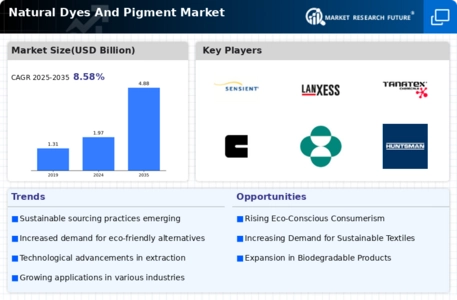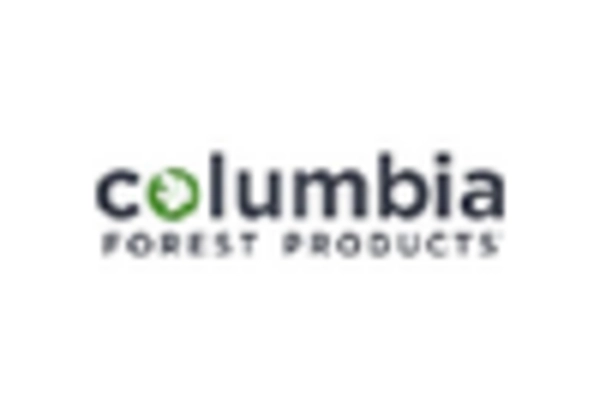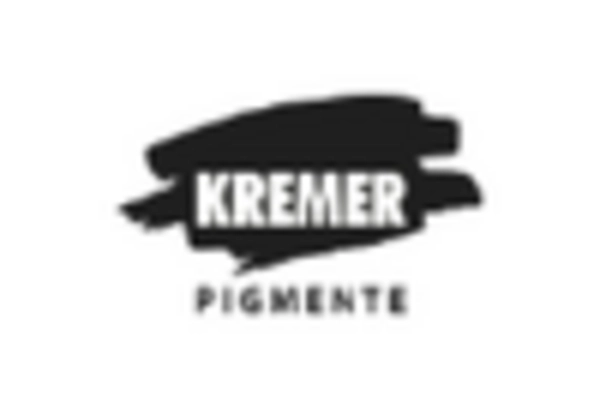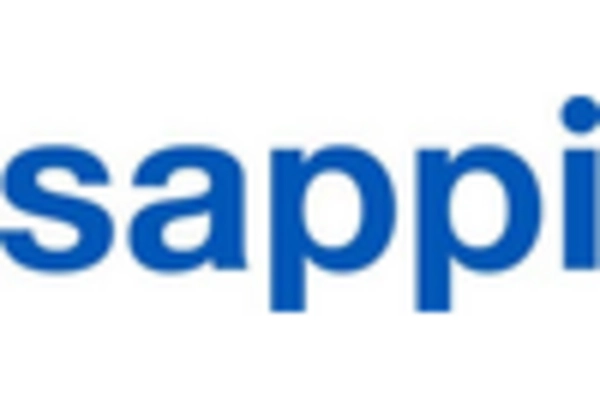Regulatory Support
Regulatory frameworks promoting the use of natural dyes are emerging as a significant driver for the Natural Dyes And Pigment Market. Governments and international organizations are increasingly implementing regulations that restrict the use of harmful synthetic dyes, thereby encouraging manufacturers to adopt natural alternatives. For instance, certain regions have introduced guidelines that favor the use of natural dyes in textiles and food products. This regulatory support not only enhances market opportunities for natural dyes but also fosters a competitive landscape where companies are incentivized to innovate. Consequently, the Natural Dyes And Pigment Market is expected to expand as businesses adapt to these regulations and consumers become more aware of the benefits associated with natural dyes.
Health Consciousness
The rising health consciousness among consumers is driving demand for natural dyes in various applications, particularly in food and textiles. As individuals become more aware of the potential health risks associated with synthetic dyes, there is a noticeable shift towards natural alternatives. Market data suggests that the food segment of the Natural Dyes And Pigment Market is experiencing a growth rate of around 10% as consumers prefer products that are free from artificial additives. This trend is further supported by the increasing popularity of organic and clean-label products, which often utilize natural dyes. As a result, manufacturers are likely to invest in research and development to create innovative natural dye solutions that cater to health-conscious consumers.
Sustainability Awareness
The increasing awareness regarding environmental sustainability appears to be a pivotal driver for the Natural Dyes And Pigment Market. Consumers are progressively seeking eco-friendly alternatives to synthetic dyes, which are often associated with harmful environmental impacts. This shift in consumer preference is reflected in market data, indicating a potential growth rate of approximately 8% annually for natural dyes. Companies are responding by investing in sustainable practices and sourcing natural materials, which not only enhances their brand image but also aligns with the growing demand for sustainable products. As a result, the Natural Dyes And Pigment Market is likely to witness a surge in innovation and product development aimed at meeting these eco-conscious consumer demands.
Innovation in Extraction Techniques
Advancements in extraction techniques for natural dyes are significantly influencing the Natural Dyes And Pigment Market. Innovative methods, such as enzyme-assisted extraction and supercritical fluid extraction, are enhancing the efficiency and yield of natural dyes from various sources. These technological improvements not only reduce production costs but also improve the quality and stability of the dyes. As a result, manufacturers are better positioned to meet the increasing demand for high-quality natural dyes across multiple sectors, including textiles, cosmetics, and food. The ongoing research and development in extraction technologies suggest a promising future for the Natural Dyes And Pigment Market, as companies strive to optimize their processes and expand their product offerings.
Cultural Heritage and Artisanal Practices
The revival of traditional artisanal practices and cultural heritage is emerging as a compelling driver for the Natural Dyes And Pigment Market. Many regions are witnessing a resurgence in the use of natural dyes, rooted in historical practices that emphasize craftsmanship and sustainability. This trend not only preserves cultural identity but also appeals to consumers seeking authenticity in their products. Market data indicates that the artisanal segment of the Natural Dyes And Pigment Market is growing, as consumers are willing to pay a premium for products that reflect traditional methods. This cultural renaissance is likely to encourage more artisans and small-scale producers to enter the market, thereby enriching the diversity of natural dye offerings.


















Leave a Comment